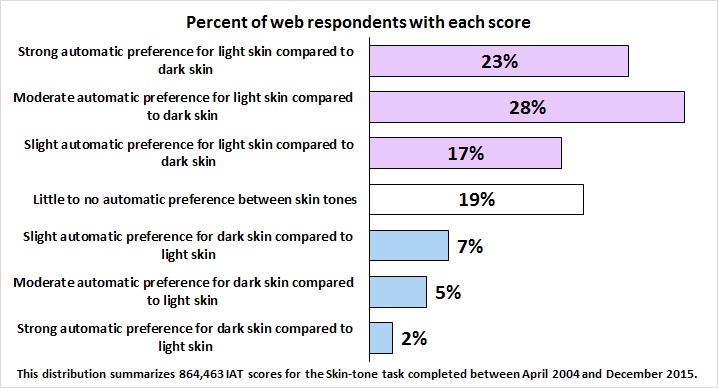What do diversity and inclusion mean to you?
Dr. Jeanine Downie, board-certified dermatologist and director of her own practice called image Dermatology P.C., in Montclair, N.J., along with Dr.Deborah Sherman, board-certified ophthalmologist and chief oculofacial plastic surgeon/CEO of Sherman Aesthetic and Laser Center in Nashville, TN, partnered with Obagi to further the discussion surrounding inclusion and diversity in the world of aesthetic medicine.
Dr. Downie says, “I love Obagi’s initiative. I was pleased to be included in the initiative and, as an African American woman involved in dermatology, I find that there are very few women who are skin of color key opinion leaders at the top of the food chain in dermatology.”
The initiative, known as SKINCLUSION, was developed to elevate the global conversation about diversity and encourage practicing dermatologists and skin care professionals to recognize their unconscious biases, which may cause blind spots in our everyday lives.
For Dr. Sherman, the SKINCLUSION initiative offers a different way to approach patient care. She says,
“Our practice actively serves all patients of all skin types, and we offer scientifically researched treatment options. It is important to me that we offer services and products that are proven to work on all skin types. That is why I value the robust research and development that Obagi has invested to produce products that work for patients of all skin types.”
Obagi developed SKINCLUSION as part of their 30-year commitment to inclusion and diversity in all aspects of their business—from their culture to product development.
SKINCLUSION is meant to encourage patients and physicians to commit themselves to diversity and inclusion by recognizing—and challenging—their unconscious biases.
What is unconscious bias?
Unconscious, or implicit, biases are classified as attitudes or stereotypes that are often unintentional, outside of our awareness or automatic. These biases are unique to each person and are greatly influenced by that person’s background, personal experiences and cultural environment.
Unconscious biases can often cause “blind spots,” which prevent us from seeing the humanity we all share—and have been extensively studied by behavioral scientists who have demonstrated how these biases can interfere in our lives—including during patient interactions.
“I’m African American and female and my emotional intelligence is very high,” Dr. Downie says. “I notice unconscious bias every day I leave my house, unfortunately. At the gas station, in the airport, at work, at home, at restaurants, All. The. Time.”
SKINCLUSION’s goal is to provide a platform for us all to recognize and address our unconscious biases—and advance the need for inclusivity across the globe.
“Everyone has bias, but learning about unconscious bias just gives you a new antennae so you can be more inclusive and therefore, more effective,” Dr. Sherman says.
To achieve their goal, Obagi partnered with the International Cultural Diversity Organization and Project Implicit, a global non-profit and a research organization, which promotes diversity and inclusion while educating physicians and skin care professionals about implicit bias through Implicit Association Tests.
The tests include the Skin Tone Implicit Association Test, a test that asks you to sort photos and words into groups regarding various beliefs, attitudes and opinions.
The purpose of the Skin Tone Implicit Association Test is to measure the association between dark and light skin and good and bad words. The test measures the strength between concepts (such as dark/light skin) and personal evaluations (good/bad) to determine if a person has an implicit preference based on skin tone.

Figure 1 Courtesy of Harvard and Project Implicit
By recognizing our unconscious biases, we can make strides to dispel them—which should lead to a more diverse profile of patients, skin tones, skin types and skin care products.
Dr. Sherman explains the ease of recognizing and improving our tendency to lean towards our biases by asking herself and her staff if they are making assumptions in their day to day lives.
“When our practice chooses a new message, treatment or product to offer patients in our community, we try to consciously remind ourselves by asking this question: ‘Are we making any assumptions when we make a treatment recommendation or are we leaving anyone or any perspective out of our considerations?’” Dr. Sherman says.
How do I practice inclusivity and diversity in my practice?
Celebrating inclusivity and diversity in your practice can elevate the dialogue surrounding diversity and allow us to make conscious choices that empower each and every one of us.
With the cosmeceutical market growing in popularity, this can only strengthen the relationships physicians and skin care professionals share with their patients—but also improve their level of care.
Dr. Suzan Obagi discusses the importance of evaluating the past, present and future of our patients as well as their background in skin care to determine the most suitable treatment plan:
“When I am evaluating my patients, I’m looking at the diversity in the skin care that they’ve used in the past, the skin conditions that they present with, but also their cultural, their ethnic, their racial makeup that may bring to us certain problems that we need to address.”
Those with Fitzpatrick skin type VI may have totally different concerns than someone with a skin type I—and recognizing and celebrating these differences can only improve our ability to treat them effectively.
Dr. Downie explains, however, that inclusivity and diversity doesn’t end there.
“Pharmaceutical [and cosmeceutical] companies [need to] hire a diversity of employees on their lower levels, promote them to their upper levels so that they also have decision-making power and then do forward-facing advertising with all skin types. Because we all learn from each other’s experiences, it makes us better people,” she says.
Why choose SKINCLUSION and Obagi?
While practicing inclusivity and diversity in your practice is important, it’s also beneficial to choose skin care brands that align with your beliefs—as your patients will often do the same.
Jamie Castle, Obagi’s President, explains, “Obagi’s SKINCLUSION initiative represents our commitment as leaders in the skin care space to elevate the global dialogue about diversity and inclusion, and spark actions that are more inclusive and reflective of all of our beautiful differences.”
To ensure this goal is achieved, Obagi developed research protocols that ensure each Fitzpatrick skin type has the opportunity to show a response to their skin care products—as not all skin types age in the same sequence. They’re the first medical brand to develop this protocol, allowing clinical research protocols to cover all six skin types across the Fitzpatrick skin spectrum.
This means that ALL Obagi products are suitable for use on skin types I – VI. As a leading, physician-dispensed brand, Obagi believes that the most efficient way to protect and nourish skin is to choose products that are clinically proven for the appropriate age, skin tone and specific concerns of your patients.
If you’d like to join the conversation, there are several things you can do. First, Dr. Downie recommends speaking up.
“When you see something is only tested on skin types I – III or I – IV, ask what happened to the rest of their testing. Ask why there’s not enough diversity if you feel there’s not enough diversity. Notice if there’s a lack of diversity and try to pay attention to that. If you want, you should definitely encourage different universities around the country, residency programs, to hold diversity and inclusion seminars and TALK about unconscious bias.”
Ideally, every skin care product and procedure should be tested on skin types I – VI. We all have skin and each one of us deserves to have the best skin possible.
Many groups and organizations have taken part in the SKINCLUSION initiative, including Cosmetic Surgery Forum, Cosmetics Boot Camp, and the American Society for Dermatologic Surgery.
“[SKINCLUSION] has rall[ied] physicians and key opinion leaders to take part in [the] global movement—[including] 1,700 key opinion leaders reached at various panels and symposiums and 1,971 physicians. [They all] pledged their support by promoting SKINCLUSION in their practice. Overall, the SKINCLUSION campaign generated over three billion global impressions,” an Obagi representative says.
If you’re ready to pledge your support for Obagi’s SKINCLUSION initiative, follow these steps:
- Share SKINCLUSION collateral in your practice, including patient brochures and videos.
- Join the conversation on social media by tagging #SKINCLUSION and @obagimedical.
- Spread the word in your practice with SKINCLUSION patient events and work with your Obagi sales consultant to identify opportunities to promote SKINCLUSION.
Want to learn more about treating skin of color? Check out more!




Leave a Comment